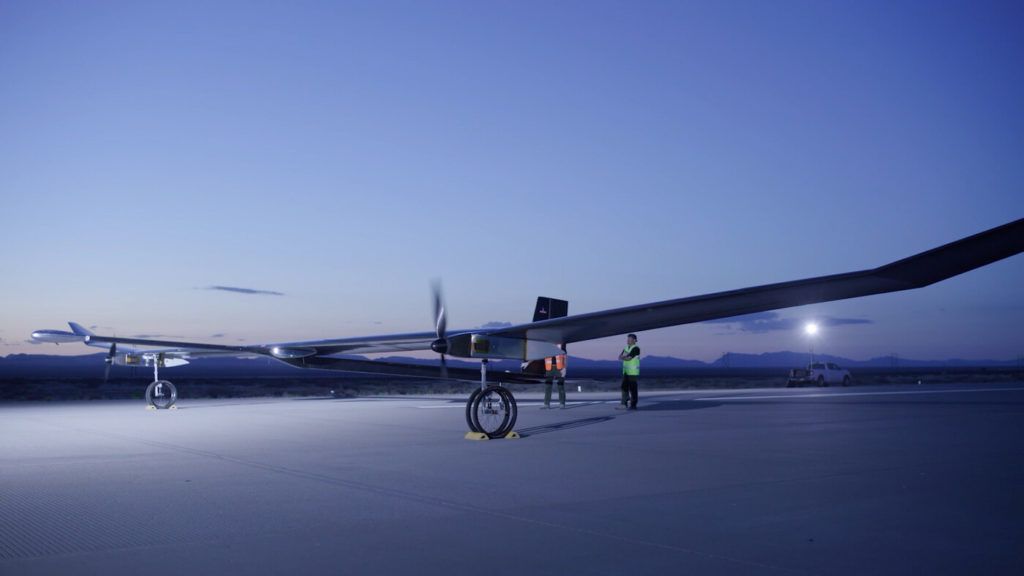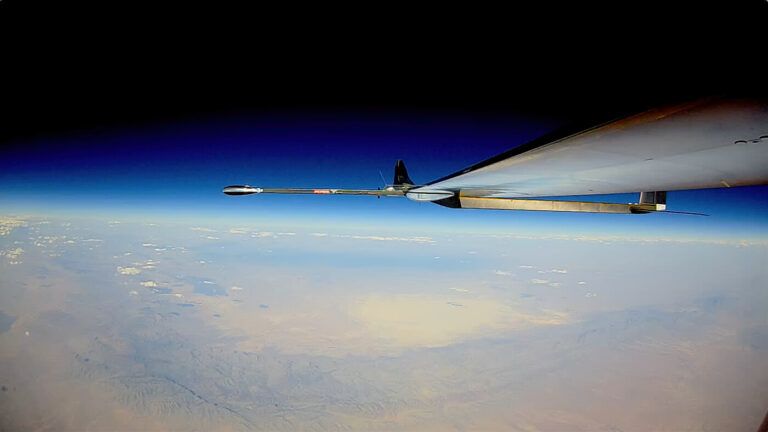BAE Systems’ High Altitude Pseudo Satellite drone PHASA-35 has successfully completed its first stratospheric flight trial.
The test flight was completed last month from New Mexico, USA over a 24-hour period, during which the High Altitude Pseudo Satellite (HAPS) reached an altitude of more than 66,000ft in the stratosphere before landing.
PHASA-35 (Persistent High Altitude Solar Aircraft) is an experimental solar-electric drone with a 35m (115ft) wingspan covered in solar panels. The drone, which is made of composites weighs 150kg (330 lbs) including a 15kg (33 lbs) payload uses the solar panels and batteries to charge up during the day so it can stay aloft at night.
The unmanned drone is one of several in development around the world, including Airbus’ Zephyr and Boeing’s Odysseus.
The aim of PHASA-35’s development program has been to make the drone capable of staying in the stratosphere for up to a year for a single flight.
The test flight is a significant milestone in PHASA-35’s development which began in 2018. Designed by BAE Systems’ subsidiary Prismatic to operate above the weather and conventional air traffic, the drone is intended to be used for intelligence, surveillance and reconnaissance (ISTAR) defense applications, as well as security.
BAE Systems also says PHASA-35 could be used to deliver 4G and 5G communications networks for applications such as disaster relief and border protection, as an alternative to traditional airborne and satellite systems.

The successful trial assessed the performance of the experimental system across a range of areas. It is the first in a series of trials planned to confirm system performance, support development activities and validate test points to enable PHASA-35 to be made available in defence and commercial markets internationally.
Dave Corfield, CEO of Prismatic said, “This is a fantastic achievement for everyone involved and shows the commitment of BAE Systems to invest in new technologies and markets. PHASA-35’s first stratospheric flight demonstrates that this vehicle is on track to become the go-to system for long endurance, high altitude and communications applications in the future.
“The successful trials are a testament to the hard work of the team that we have built over the last couple of years within Prismatic and across our partner companies including Piran, Amprius, Microlink, Honeywell, PMW Dynamics and the Met Office. I look forward to the next steps as we develop this system.”
PHASA-35’s maiden flight took place in Australia in 2020.
BAE Systems acquired UK-based Prismatic in September 2019, having previously been a partner in PHASA-35’s development program. The program now sits within BAE Systems’ FalconWorks division – the company’s new aerospace R&D innovation unit.






